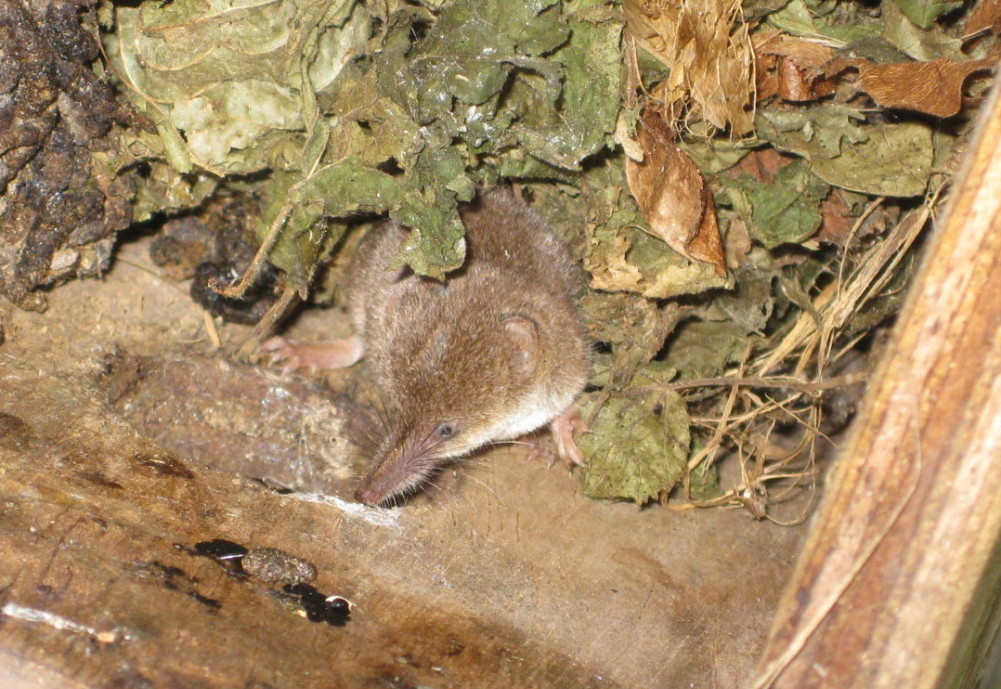Pygmy shrew

Status
Native, common and widespread
Population
8,600,000
Scientific name
Sorex minutus
Pygmy shrews are one of Britain’s smallest mammals – only pipistrelle bats weigh as little. They have grey-brown fur, paler than that of the common shrew, and a long, slightly hairy tail. Pygmy shrews are active both day and night, but rest frequently. They use a network of runways through the ground vegetation, and unlike common shrews do not dig for prey beneath the soil surface; they are poor burrowers and instead use the burrows and runways of other small mammals. Shrews have energetic metabolisms and pygmy shrews consume one and a quarter times their body weight each day. They are solitary and territorial animals and are aggressive towards other individuals, emitting a high-pitched squeak and sometimes swiping their tail from side to side if they encounter another pygmy shrew.
Head-body length: 4 – 6.5cm
Tail length: 3 – 4.5cm
Weight: 2.3 – 5g
Lifespan: 13 – 16 months
Reproduction
Mating occurs from April to August and litters up to nine pups (typically 4 – 6) are born between May and October. The young are weaned after about three weeks and become sexually mature the following spring. Females can have 2 – 3 litters each year. The mortality of young pygmy shrews is very high.
Diet
Invertebrates such as beetles, spiders, woodlice and flies. Unlike common shrews, they do not eat earthworms.
Habitat
Usually grassland, deciduous woodland and hedgerows where there is sufficient cover. They also inhabit compost heaps and other wild areas in gardens.
Predators
Mostly tawny and barn owls, but also stoats, weasels, foxes and cats.
Threats
Loss of ancient grassland and meadows.
Status & conservation
Native and common. The trapping and killing of shrews requires a licence.
Population & distribution
GB population 8,600,000. The population trend is unknown. Pygmy shrews are widely distributed throughout Britain and most offshore islands, but they are absent from Shetland, the Scilly Isles and the Channel Islands. They are the only species of shrew to be found in Ireland.
Did you know?
Like other shrews, pygmy shrews are unpalatable to many predators because of an unpleasant smelling secretion from their scent glands. Domestic cats frequently catch and kill shrews but will not eat them. There is no evidence that predators learn to avoid the musky scent however, so it is unlikely to provide much protection for the shrew.
